Results 6,141 to 6,150 of 12096
Thread: Anandtech News
-
07-20-16, 06:27 AM #6141
Anandtech: Consumer 10GBase-T Options: Motherboards with 10G Built-In
Any of our long time readers will know that I can have a soft spot for high-speed networking. Throughout the years I’ve been plagued with bad WiFi, irregular house shapes, routers that only come with a single 1G port, and the inability to set up a decent, cost effective high-speed home network. The movement to 10G has certainly been prevalent in the enterprise space, as shown by the growth of 10G panels at Supercomputing 2015 last year. However the movement to 10G for home use, which is still a niche category I admit, has been slow and still very expensive. Using 10GBase-T, over SFP or other connectivity, allows for backwards compatibility in the home which is still an important feature.
There are two main ways to show 10G to your home network: either pick up a NAS with 10G and use a switch with one or two 10G ports (then 10+ ports with 1G connections), or use a full 10G switch and have 10G devices. The cheapest 10GBase-T switch available for end-users is still Netgear’s XS708E 8-port switch, retailing for $750 or sometimes on sale for $625-650.
Buy ASRock X99 WS-E/10G on Amazon.com
That’s around $80+ minimum per port for the switch, and then you need machines with 10G access. Depending on how the wind is blowing and what sales are on, single port PCIe cards with dual 10G ports can be had for $200-$220 on the gray market or up to $400 from source, with the main option of Intel controllers, however there are a few using an Aquantia/Tehuti networking solution. Or roughly translated, $100 per port, and it requires a system with a spare PCIe 2.0 x8 slot.
As we’ve previously reviewed at AnandTech, there are other options for having consumer-based 10G enabled systems. We reviewed the ASRock X99 WS-E/10G back in December 2014, which used a PLX PCIe switch to enable both the Intel X540T2 controller and four-way GPUs in a high-end motherboard. This motherboard currently retails for $770, and uses Haswell-E and Broadwell-E high-end desktop processors.
Buy ASRock X99 WS-E/10G on Amazon.com
This motherboard held the title of the only consumer motherboard to come with a 10G chip for over a year. Late last year, in November 2015, ASUS met the feature half-way, offering their high-end Skylake-based Z170 Maximus VIII Extreme motherboard with a bundled single-port 10GBase-T card built on the Aquantia/Tehuti platform. The package carries the Extreme/Assembly branding, and also comes with a front panel DAC. We didn’t get time to review this bundle, and unfortunately the 10G card isn’t sold separately. The whole package is currently on sale for $570, however as it is Skylake based we are limited to a quad core i7-6700K system in this case.
Buy ASUS Maximus VIII Assembly on Amazon.com
Move forward to Computex 2016, and ASUS dropped on my doorstep the day before I left their new 10G motherboard design for Broadwell-E processors – a near final version of the product. This is the ASUS X99 E-WS/10G, their high-end desktop workstation motherboard with a built in Intel X550T2 controller for dual 10G ports. The board also comes with reinforced PCIe slots, support for U.2 drives, USB 3.1 and most of the updated modern features for a high-end product. We’re still in the process of testing and reviewing this motherboard, which is set for release sometime soon. Price unknown at this point, but we expect it to be certainly near the ASRock 10G board.
On the show floor at Computex, we saw another new entrant to the onboard 10G market on display. While all the other motherboards have been ATX (or E-ATX) so far, MSI is going to plug an Intel X550 controller on a Xeon grade Z170 micro-ATX motherboard to go after some smaller form factor designs. This design uses the C236 chipset, allowing users to equip either a Skylake Core CPU or a Xeon E3-1200 v5 processor, and siphons off four PCIe lanes from the CPU for the 10G controller. This gives 12 lanes from the CPU left, 8 of which go to the main PCIe slot, and another four to the M.2 slot as well. Being both Z170 based and micro-ATX should allow this product to be priced cheaper than the others, although unlike the others it only houses one 10GBase-T port rather than two. When MSI are near final with this motherboard, we’d love to get it in for testing.
Gallery: Consumer 10GBase-T Options: Motherboards with 10G Built-In





There are also a variety of non-consumer focused motherboards with 10GBase-T ports, either with Xeon-D SoCs or dual socket motherboards, such as the MBD-X9DRE-TF+ from Supermicro (dual LGA2011) for $670 or the X10FRC-T4+-O (dual LGA2011-3) for $941.
For consumers looking to move to 10G for home networking, we’re still waiting for the pricing of switches to come down, however it would seem that there are moves afoot to equip more motherboards with 10G by default. There’s still the added cost, and it means the PCIe lane layouts might be a bit different to normal, but it removes the need for an extra PCIe slot/card overall. It’s a slow march, and the price of both switches and 10G controllers needs to come down to make it a more viable option.
More...
-
07-20-16, 08:18 AM #6142
Anandtech: The NVIDIA GeForce GTX 1080 & GTX 1070 Founders Editions Review: Kicking O
It has taken about 2 years longer than we’d normally see, but the next full generation of GPUs are finally upon us. Powered by FinFET based nodes at TSMC and GlobalFoundries, both NVIDIA and AMD have released new GPUs with new architectures built on new manufacturing nodes. AMD and NVIDIA did an amazing job making the best of 28nm over the 4 year stretch, but now at long last true renewal is at hand for the discrete GPU market.
Back in May we took a first look at the first of these cards, NVIDIA’s GeForce GTX 1080 Founders Edition. Launched at $700, it was immediately the flagship for the FinFET generation. Now today, at long (long) last, we will be taking a complete, in-depth look at the GTX 1080 Founders Edition and its sibling the GTX 1070 Founders Edition. Architecture, overclocking, more architecture, new memory technologies, new features, and of course copious benchmarks. So let’s get started on this belated look at the latest generation of GPUs and video cards from NVIDIA.
More...
-
07-20-16, 10:03 PM #6143
Anandtech: Intel Begins Shipment Of Seventh Generation Core: Kaby Lake
Intel had their Q2 earnings today, and while we’ll get to that shortly, some news came out of the earnings call that was interesting. Intel CEO Brian Krzanich stated on their earnings call that Intel is now shipping their 7th Generation Core processor, code named Kaby Lake.
Kaby Lake was not even a product not that long ago, but with Intel coming up against the laws of physics with process shrinks, they made the announcement a year ago that they would be adding more architectures per process shrink. The delays in moving to 22 nm and then 14 nm meant that they were missing the anticipated product launches for their OEMs, which left the OEMs with quarters where they would have no new products to sell. In an attempt to smooth out the timelines to a more reasonable cadence, while at the same time coming to grips with the complexity of moving to smaller and smaller processes, Intel announced Kaby Lake as a successor to Skylake, which would build on Skylake and offer additional architectural improvements.
This was big news at the time mostly because Intel’s previous Tick Tock strategy was so successful. To abandon it was certainly an important step for the company, but with Kaby Lake seemingly on-time for a fall launch this year, just a year after Skylake launched, points to the investment being the correct one.
When Intel says they are shipping, they of course mean they are shipping to their device manufacturer partners, so we should start seeing Kaby Lake based computers this fall.
Another interesting point brought up during the call was on yields. Intel has found itself in a situation where it’s inventory levels are higher than they would like them to be, and the answer to this was yields. Intel’s yields improved in Q1, and to quote Stacy J. Smith, Intel’s CFO and EVP, “Frankly, they got a lot better in Q2 as well” which is likely another reason why Kaby Lake is being delivered on-time.
We should learn more about Kaby Lake at Intel’s IDF which is coming up in mid-August.
Source: Intel Investor Call
More...
-
07-20-16, 11:22 PM #6144
Anandtech: Intel Announces Q2 FY 2016 Earnings
In addition to the interesting tidbit about Kaby Lake, Intel also found time today to announce their second quarter earnings for fiscal year 2016. Revenue was up 3% year-over-year, but net income and earnings per share took a big hit due to the restructuring announced in Q1. Revenue for the quarter was $13.5 billion, and while gross margin was down 3.6% to 58.9%, Intel did exceed their outlook on margins. Operating income for the quarter was $1.3 billion, compared to $2.9 billion a year ago, and net income was $1.3 billion as well, down from $2.7 billion last year. Earnings per share came in at $0.27 per share, down 51% from the $0.55 result a year ago.
To account for the restructuring fees and other charges, Intel has also released Non-GAAP results. Revenue was the same at $13.5 billion, and gross margin was 61.8%, which was down 1.3% from a year ago. Operating income was $3.2 billion, down 2% from last year, and net income was down 6% to $2.9 billion. Non-GAAP earnings per share came in at $0.59 per share, down 5% from the $0.62 recording in Q2 2015.
Looking forward to next quarter, Intel sees revenues at $14.9 billion, plus or minus $500 million, with margins around 60%, plus or minus a couple of percent.Intel Q2 2016 Financial Results (GAAP) Q2'2016 Q1'2016 Q2'2015 Revenue $13.5B $13.7B $13.2B Operating Income $1.3B $2.6B $2.9B Net Income $1.3B $2.0B $2.7B Gross Margin 58.9% 59.3% 62.5% Client Computing Group Revenue $7.5B -3% -3% Data Center Group Revenue $4.0B +1% +5% Internet of Things Revenue $572M -12% +2% Non-Volatile Memory Solutions Group $554M -1% -20% Intel Security Group $537M flat +10% Programmable Solutions Group $465M +30% - All Other Revenue $40M -20% -36.5%
Looking at the individual business lines, Intel now has a couple of additional business groupings. After the acquisition of Altera, the formed the Programmable Solutions Group, and they also have the New Technology Group to manage the products designed for wearables, cameras, and other segments. The longer tenured groups are still the Client Computing Group, Data Center Group, Internet of Things Group, Non-Volatile Memory Solutions Group, and Intel Security Group, as well as “All Other”.
The Client Computing Group is platforms for notebooks, desktops, tablets, phones, and wireless connectivity. This group had revenues of $7.3 billion for the quarter, down 3% year-over-year. Intel decreased sales of their notebook platforms by 5% compared to Q2 2015, but the average selling price increased 2%. Desktops decreased 7%, and average selling price increased 1%. Tablet platform volumes fell 49% to 5 million units. Overall, Client Computing Group unit volumes decreased 15% year-over-year, but average selling prices increased 13%.
The Data Center Group had revenues of $4.027 billion, which is up 5% year-over-year. Unit volumes were up 5% year-over-year, but average selling prices of this line was down 1%.
The Internet of Things group had revenues of $572 million, up 2% year-over-year, while the Non-Volatile Memory Solutions Group had revenues of $554 million, which is down 20% year-over-year. Intel Security Group revenue was up 10% year-over-year to $537 million, and the new Programmable Solutions Group had revenues of $465 million, up 30% from last quarter when they were acquired.
Intel’s quarter met their expectations, but the restructuring charges have taken a toll on their profitability. Perhaps the most exciting news from this announcement though is that Kaby Lake is now shipping, along side the latest 7360 LTE modem.
Source: Intel Investor Relations
More...
-
07-21-16, 07:06 AM #6145
Anandtech: Cards Galore: A Quick Look At the Custom GeForce GTX 1060 Launch Lineup
The NVIDIA GeForce GTX 1060 is here to contend for mainstream space. Alongside the NVIDIA-only Founders Edition card, we will see a large number of cards released from other vendors (I count 18 in this write up) which gives consumers enough choice to fill a very wide range of needs.
The NVIDIA GeForce GTX 1060 Founders Edition cards will be available only from NVIDIA.com for $299. Meaning that retail outlets will be limited to just the third party cards. These cards, as we will see below, are priced from $249 all the way up to $329 with designs from single fan mini-ITX all the way up to dual fan cards just shy of a full foot in length. So let’s see what NVIDIA’s segment of the mainstream market will look like for the foreseeable future.
First on the list, which I’m covering in no particular order, is EVGA. They have announced four cards, two which use their ACX 2.0 single fan cooler in an m-ITX form factor and another two that use the relatively new ACX 3.0 dual fan cooler that we’ve seen on cards all the way up to the GeForce GTX 1080. EVGA re-iterates that fans in their coolers use double ball bearings which will result in longer fan life. They also state that their fans use three watts less than competitor’s fans at the same acoustic level, claiming more overclocking headroom as a benefit. Though I’ve seen a larger rise in power consumption from temperature differences alone, so while less power use is good I’m skeptical of meaningful changes to overclocking limits. Speaking of power delivery. The two smaller cards, the GTX 1060 Gaming and GTX 1060 SC Gaming, will each have a single six pin power connector. Meanwhile, the GTX 1060 SSC Gaming and GTX 1060 FTW Gaming will have single eight pin connectors for their power deliver.
Clock speeds for the EVGA’s GeForce GTX FTW Gaming and GeForce GTX SSC Gaming have not yet been announced, as these cards will be launching at a later date. Though It’s safe to assume that they will be faster than the two smaller cards. EVGA’s 1060 Gaming will run at the same stock speed as the founder’s edition card. The 1060 SC Gaming, on the other hand, will see some performance improvements from a 7% overclock. For the two higher tier cards, between the larger cooler and more robust 6+1 power delivery (up from 3+1) there is potential for healthy gains over a stock configuration. For video output EVGA’s offerings all have two HDMI 2.0b ports, two DisplayPort 1.4 ports, and one DVI-D port. Prices for these cards will land at $249 for the GTX 1060 Gaming and $259 for the GTX 1060 SC. We are still waiting for prices on the EVGA’s GeForce GTX FTW Gaming and GeForce GTX SSC Gaming.EVGA GTX 1060 Specification Comparison EVGA GeForce GTX 1060 FTW EVGA GeForce GTX 1060 SSCEVGA GeForce GTX 1060 SCG EVGA GeForce GTX 1060Core Clock ????MHz ????MHz 1607MHz 1506MHz Boost Clock ????MHz ????MHz 1835MHz 1708MHz Memory Clock 8Gbps GDDR5 VRAM 6GB Launch Date TBD 7/20/2016 Launch Price TBD TBD $259 $249
Moving on, ASUS's three cards are the same ones we already visited a few weeks ago. This time though we have numbers to go with the picture we were shown before.
Base clocks have not been announced for all of ASUS's cards, but the boost clock numbers we are shown can give us some idea of the potential these cards will hold. There will be both an overclock ROG Strix card for $329.99 and one with stock clock speeds priced at $309.99. Moving down to the dual fan model we see another OC version and a card running at stock clock speeds which are currently un-priced. Lastly we have the ASUS Turbo GTX 1060 which will be running with a blower style cooler at stock speeds, and be priced at $249.ASUS GTX 1060 Specification Comparison ROG STRIX-GTX 1060-O6G-GAMING ROG STRIX-GTX 1060-6G-GAMING DUAL-
GTX1060-O6GDUAL-
GTX1060-6GTURBO-GTX1060-6G Core Clock 1620MHz 1506MHz ????MHz 1506MHz Boost Clock 1847MHz 1708MHz 1784MHz 1708MHz Memory Clock 8.2Gbps GDDR5 8Gbps GDDR5 8Gbps GDDR5 VRAM 6GB Launch Date 7/20/2016 TBD 7/20/2016 Launch Price $329 $309 $??? $??? $249
Up next is PNY. Information from PNY on their GeForce GTX 1060 is limited. Based on their pictures we can see what looks like a plastic shroud on a dual fan cooler. The specifications on the webpage for this card have stock numbers all around. Simularly, it appears they're using the stock NVIDIA display connector layout. The PNY GeForce GTX 1060 will have a list price of $259.
Meanwhile MSI is providing four versions of the GeForce GTX 1060. Three of the cards, the GEFORCE GTX 1060 6GT OC, GEFORCE GTX 1060 ARMOR 6G OC, and GEFORCE GTX 1060 GAMING 6G all have relatively moderate overclocks and sport dual fan open air coolers. Aside from their base model only having one each of DP 1.4, HDMI 2.0b and DVI-D and the others upping the DP 1.4 count to three, the differences are largely cosmetic and cooling. Though the GTX 1060 Gaming supports a silent mode with stock clock speeds and two overclock modes, the fastest of which sits just under the clock speeds of their other two offerings.PNY GTX 1060 Specification PNY GeForce GTX 1060 Core Clock 1506MHz Boost Clock 1708MHz Memory Clock 8Gbps GDDR5 VRAM 6GB Launch Date 7/20/2016 Launch Price $259
Once we jump up to the GTX 1060 Gaming X we keep the stock clock speeds in “Silent Mode”. Though the gaming and OC modes are bumped above and beyond what is seen with their other cards. If the TWIN FROZR VI cooler is unmodified from those found on the higher end cards such as the GTX 1080 then it is likely much more heatsink than this GPU will ever need. While a review is still pending I’ve had some time with the MSI GeForce GTX 1080 Gaming X, and on that card this cooler is very cool and quiet. Especially under lighter loads when the fans shut off. On top of crazy coolers, both the Gaming cards and the Armor card have single eight pin power connectors. Pricing for MSI’s offerings will be as follows: MSI GeForce GTX 1060 GAMING X 6G: $289, MSI GeForce GTX 1060 Gaming 6G: $279, MSI GeForce GTX 1060 Armor 6G OC: $259, and lastly, the MSI GeForce GTX 1060 6GT will be listed for $249.MSI GTX 1060 Specification Comparison MSI GeForce GTX 1060 Gaming X (OC Mode) MSI GeForce GTX 1060 Gaming (OC Mode)MSI GeForce GTX 1060 ARMOR 6G OCMSI GeForce GTX 1060 6GT OCCore Clock 1594MHz 1531MHz 1544MHz 1544MHz Boost Clock 1809MHz 1746MHz 1759MHz 1759MHz Memory Clock 8.1Gbps GDDR5 8Gbps GDDR5 VRAM 6GB Launch Date 7/20/2016 Launch Price $289 $279 $259 $249
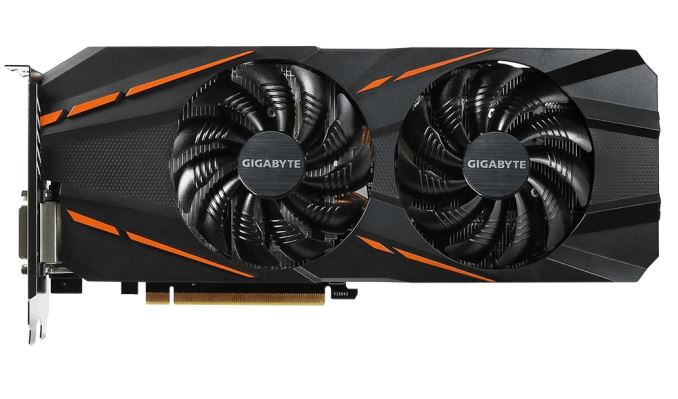
Up next, GIGABYTE is releasing two dual fan models. Both cards possess back plates and RGB lighting. In fact, over on GIGABYTE’s site is a working utility allowing one to play around with the cards RGB lighting from within the browser. Kind of a neat diversion while writing out a news report. Moving on these cards both have a single eight pin for power. With three DP 1.4, one HDMI 2.0b, and one Dual-Link DVI-D. They also both have backplates on their backsides.
GIGABYTES GTX 1060 D5 is running at stock speeds out of the box but has an OC mode that can be enabled through their “XTREME engine utility” which bumps the clock speeds up slightly. The GTX 1060 G1 Gaming card has a healthier boost in both gaming mode and OC mode, giving up to an 8% clock speed boost over the stock speeds. The GIGABYTE GeForce GTX 1060 G1 Gaming will be priced at $289, and it is currently $249.99 for the GIGABYTE GTX 1060 D5.GTX 1060 Specification Comparison GIGABYTE GeForce GTX 1060 G1 Gaming GIGABYTE GeForce GTX 1060 D5 Core Clock 1556MHz 1531MHz Boost Clock 1746MHz 1721MHz Memory Clock 8Gbps GDDR5 VRAM 6GB Launch Date 7/20/2016 Launch Price $289 $249
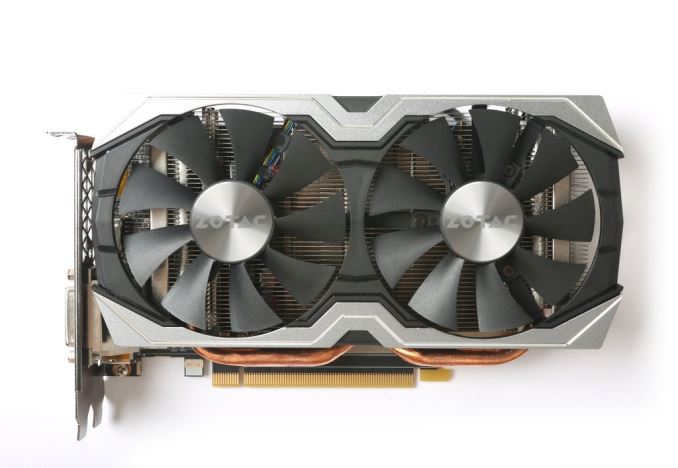
Last but certainly not least, ZOTAC is releasing both a single fan GTX 1060 Mini and a dual fan GTX 1060 AMP! Edition this time around. Neither card has a back plate and both go the three DisplayPort and one HDMI port route for video output. They also each use a single PCI-e six pin connector for power. While the mini-ITX card is running stock we do see a small increase in clock speeds for the dual fan model. The ZOTAC GTX 1060 Mini will be listed for $249 while the ZOTAC GTX 1060 AMP! Edition will be listed for $279.
Wow, this took a while to write up. While I’m sure it’s obvious at this point, there will be quite a lot of options for those looking in the $249 to $329 range. We can see cards ranging from m-ITX ready to nearly foot-longs which wouldn’t surprise if they were quiet with a hefty overclock. For further information, you can see our sources below for each of these cards. Keep an eye out later this week for our pending review of the NVIDIA GeForce GTX 1060 Founders Edition.ZOTAC GTX 1060 Specification Comparison ZOTAC GeForce GTX 1060 AMP! Edition ZOTAC GeForce GTX 1060MiniCore Clock 1556MHz 1506MHz Boost Clock 1771MHz 1708MHz Memory Clock 8Gbps GDDR5 8Gbps GDDR5 VRAM 6GB Launch Date 7/20/2016 Launch Price $279 $249
More...
-
07-21-16, 08:36 AM #6146
Anandtech: Verizon Announces Price And Availability For Moto Z And Moto Z Force Droid
Today Motorola and Verizon announced the availability and pricing details for the Moto Z Droid Edition and the Moto Z Force Droid Edition, the Verizon exclusive versions of Motorola's Moto Z smartphones. The Moto Z Droid with 32GB of internal storage costs $26 per month for 24 months using Verizon’s device payment plan or $624 total. The Moto Z Force Droid costs $30 per month for 24 months or $720 total. Both phones will also be available with 64GB of NAND through Motorola’s Moto Maker website, but those prices are not yet available. The new Moto Z Droids are up for preorder online starting today and will be available for purchase in Verizon stores beginning July 28.
Pricing for the Moto Mods, the modular accessories that snap onto the back of the phones using strong magnets, was also revealed. The JBL SoundBoost speaker, which includes two speakers, a kickstand, and an additional 1000mAh battery, costs $79.99. The Moto Insta-Share DLP projector, which outputs a 854x480 WVGA image at 50 lumens nominal and also includes an 1100mAh battery, is $299.99. Incipio, Kate Spade, and TUMI offer several 2200mAh Power Packs that range in price from $59.99 to $89.99. Each design comes in both standard and wireless charging versions, with the latter supporting the Qi and PMA standards.
Just like with past Motorola phones, there are several decorative back plates that allow you to customize the look and feel of the new Droids. These come in several colors and materials, including real wood, leather, and fabric, and sit flush with the rear camera when snapped into place. The decorative Style Shells start at $14.99, with the nylon fabric and wood versions costing $19.99 and the leather-covered plates costing $24.99. All of the Moto Mods and back plates will be available the same day as the phones.
Motorola first announced the Moto Z and Moto Z Force at Lenovo’s Tech World event in June. These new phones replace the Moto X family as the company's flagship devices. Both phones have a 5.5-inch QHD (2560x1440) AMOLED screen and come with Qualcomm's Snapdragon 820 SoC, 4GB LPDDR4 RAM, and either 32GB or 64GB of internal storage that's expandable via microSD.
There are a few notable differences between the two models. The Moto Z Droid comes with a smaller 2600mAh battery packed inside an especially thin all-aluminum chassis. The Moto Z Force Droid bumps battery capacity to 3500mAh and increases rear camera resolution to 21MP versus 13MP for the Moto Z Droid. It also includes a hybrid autofocus system that combines PDAF with a laser, which should be a step up from the standard Z's laser autofocus. Both cameras have f/1.8 apertures and OIS.
While the Moto Z Droid’s screen is covered edge to edge with Corning Gorilla Glass, the Moto Z Force Droid uses Motorola's second-generation Moto ShatterShield technology, which should improve the screen's resistance to cracking or shattering if dropped.
For more information about these phones, including a full list of specifications and additional pictures and discussion, please see our original Lenovo Tech World article.
More...
-
07-21-16, 08:36 AM #6147
Anandtech: Assessing IBM's POWER8, Part 1: A Low Level Look at Little Endian
A few months ago, IBM brought the relatively cheap S812LC server to the market, making sure the IBM POWER8 is within the budget of almost every datacenter. In this article we assess the capabilities of the "affordable" IBM POWER8 and compare with the Intel Xeon E5 v4 to offer you the very first Little Endian, level playing field benchmarks.
More...
-
07-21-16, 10:39 AM #6148
Anandtech: Super Talent Launches their PCIe Nova U.2 SSDs, up to 2 TB and 3 GB/s
The march to U.2 adoption is slow but coming - it is already more successful than SATA Express ever was. Consumer motherboards are now coming equipped with slots, and we've seen a single vendor supply drives to the consumer space - a number of players behind the scenes are shipping to enterprise users, and are expected to launch consumer grade products at some point in the next twelve months. While not specifically aimed at consumers, we got word that this week Super Talent has added a family of SSDs with U.2 connector into its lineup of products. Their new PCIe Nova drives will be aimed at servers and workstations first, and will offer capacities up to 2TB as well as high quoted performance. In fact, the new SSDs will be the fastest drives in Super Talent’s lineup and will compete against high-end drives from companies like Intel and HGST.
The Super Talent PCIe Nova SSDs with a U.2 (SFF-8639) connector and PCIe 3.0 x4 interface will be based on MLC NAND memory and will be offered in various configurations, initially starting with 120 GB, up to 1920 GB. The manufacturer does not disclose the exact model of the controller or the exact type of flash it uses to build the devices, but it claims that the drives have maximum sequential read speed of 3 GB/s and maximum sequential write speed of 2.2 GB/s. Super Talent also does not specify endurance of the SSDs, but declares a mean time between failures (MTBF) at 1 million hours, which is in line with consumer storage devices.
As for dimensions, all drives come in 2.5”/9.5 mm form-factor, rather than 7mm. They are still compatible with almost all desktops, servers, workstations as well as other applications with large storage bays and U.2, however some mobile devices might have limitations. Keep in mind that Super Talent officially positions its PCIe Nova drives for servers and workstations, despite the consumer based MTBF and no listed enterprise features.Super Talent PCIe Nova SSD General Specifications Capacity 120 GB 240 GB 480 GB 960 GB 1920 GB Model Number FPG120PS2B FPG240PS2B FPG480PS2B FPG960PS2B FPG1T9PS2B Controller unknown NAND Flash MLC NAND, unknown manufacturer Sequential Read Up to 3 GB/s Sequential Write Up to 2.2 GB/s Form-Factor 2.5"/9.5mm Interface U.2 with PCIe 3.0 x4 MTBF 1 million hours
The U.2 connector has still got some traction to gain in the desktop space, with about a dozen motherboards currently supporting the native connector and over 100 others suitable via M.2 to U.2 converter cards. On the enterprise side, companies like Intel and HGST have released a number of SSDs for servers and workstations featuring this interface and server/storage systems makers like Supermicro support U.2 with their latest SuperServer and SuperStorage solutions, including features such as the NVMe 1.2 protocol as well as hot-swapping.
The main driving force for U.2, at least publicly, has so far been Intel and its DC P3xxx-series SSDs. For workstations, Intel also released its SSD 750-series drives with the SFF-8639 connector in 2015. As a result, Super Talent’s PCIe Nova SSDs will not have a lot of competitors. At this time, Super Talent has not disclosed prices for the PCIe Nova line, but enterprise customers can contact their local ST reps for more info.
More...
-
07-21-16, 10:39 AM #6149
Anandtech: HP’s Elite x3 Windows 10 Smartphone to Cost $699, Set to Be Available Worl
When HP introduced its flagship Elite x3 phablet earlier this year at MWC, the smartphone made a very positive impression mostly because HP decided to make a bold move and create a Windows Continuum device aimed purely at the business professional on a company contract. It drew a little ire from some industry analysts, thinking that HP building a Windows phone would never see the light of day. To them it was a paper announcement, but this week shows that the Elite x3 is still alive and well, and coming to consumers and business users. What the company did not announce in February was its recommended price as well as countries, where it planned to make the product available. This weeks details show that the Elite x3 will hit the market in August and will be sold in 46 countries worldwide.
The HP Elite x3 smartphone is based on Qualcomm’s Snapdragon 820 SoC, as well as Microsoft’s Windows 10 Mobile OS. The device is equipped a 5.96” AMOLED display and comes with 64 MB of eMMC 5.1 NAND flash storage, 4 GB of LPDDR4 RAM as well as all the necessary connectivity features, including 4G/LTE, 802.11ac Wi-Fi, Bluetooth 4.0 and a USB Type-C connector. Developed specifically for enterprise and business users, who value security, the device is FIPS 140-2 certified and features Secure Boot (with iris and fingerprint scanners), full disk encryption with a 256-bit key, fTPM 2.0, and so on.
While the internal specifications of the HP Elite x3 are impressive, the company does not position the device as just its flagship smartphone. HP believes that there are enterprise customers interested in using one device for multiple workloads and in various situations by taking advantage of Microsoft’s Continuum technology, which allows you to run your phone as a desktop PC. To support such clients, HP intends to offer a special dock (with an Ethernet adapter, DisplayPort USB connectors, etc.) that can work with desktop displays as well as keyboards. When purchased from the HP online store, the dock should come as standard. In addition, the company plans to sell the Mobile Extender laptop, which does not have its own processor or storage, but relies on the Elite x3. The Mobile Extender has a 12.5” display (with 1920x1080 resolution), USB-C ports, speakers as well as a spill-resistant keyboard with a drain and backlighting.HP Elite x3 SoC Qualcomm Snapdragon 820
2x Kryo @ 2.15 GHz
2x Kryo @ 1.59 GHz
Adreno 530RAM/NAND 4 GB LPDDR4 RAM,
64 GB eMMC 5.1 NAND
microSD 'up to 2 TB'Display 5.96-inch, 2560x1440 AMOLED (494 PPI)
Corning Gorilla Glass 4Network X12 Cat 12/13 LTE-A
Single Nano-SIM or Dual Nano-SIM Models
Micro-SD Shared with Nano-SIMDimensions 161.8 x 83.5 x 7.8 (mm)
6.36 x 3.29 x 0.31 (in)Weight 195 grams
0.43 lb / 6.88 ozRear Camera 16 MP, LED Flash Front Camera 8 MP wide angle, Iris Camera Battery 4150 mAh, 3.85 V, 15.98 Wh,
PMA and Qi chargingOS Windows 10 Mobile Connectivity Intel AC-7260AN WiFi (2x2 802.11ac + BT 4.0 LE)
NFC, GPS
USB 3.0 Type-CAdditional Windows Hello (Iris and Fingerprint),
FIPS 140-2, fTPM 2.0
128-bit Unified encryption, 256-bit full disk
Disaster recovery Protection
Win10 includes 128-bit BitLocker and Enterprise Grade VPN
Bang&Olufsen Sound
3x Noise-Cancelling MicrophonesWater/Dust Proof Certification IP 67
MIL-STD 810G (salt/fog/humidity/shock/thermal)
Current competition, at least in the Continuum space, comes from Acer's Liquid Jade Primo which was demoed at MWC and quietly shipped several days ago, and the Lumia 950.
According to Engadget, which cites a representative of HP, the phablet itself will cost $699 in the U.S. and $799 when acquired with a dock, starting from August 29. Slashgear claims that the Elite x3 will cost €863 in the Netherlands and 8,624 SEK in Sweden. Unfortunately, the price of the Mobile Extender is still unknown.
Sources: Engadget, Slashgear, HP Netherlands, HP Sweden.
Gallery: HP’s Elite x3 Windows 10 Smartphone to Cost $699, Set to Be Available Worldwide

More...
-
07-21-16, 10:34 PM #6150
Anandtech: AMD Releases Q2 FY 2016 Financial Results
This afternoon, AMD announced their second quarter earnings for the 2016 fiscal year. It’s been a while, but AMD finds itself in the black for this quarter, with higher revenues, and thanks to $150 million from a joint venture with Nantong Fujitsu Microelectronics, AMD’s net income found its way into the positive column. AMD had revenues of $1.027 billion for the quarter, which is up 23% from last quarter, and more importantly up 9% from a year ago. Gross margin for the quarter was 31%, which is still not what AMD wants or needs to maintain profitability, but it is up 6% from their Q2 2015 results which is good news for the company. AMD did record an operating loss for the quarter of $8 million, but that’s a big improvement compared to the $68 million loss last quarter and $137 million loss in Q2 2015. Net income for this quarter was $68 million, or $0.08 per share, compared to a net loss of $109 million last quarter and a $181 million loss a year ago.
AMD also released Non-GAAP results which exclude restructuring charges and some other results. On a Non-GAAP basis, AMD had the same $1.027 billion in revenue, but showed a slight operating income of $3 million, compared to a $55 million operating loss last quarter and a $87 million loss last year. Looking at net results, AMD had a net loss of $40 million, or $0.05 per share, compared to a $96 million net loss last quarter and a $131 million net loss a year ago.AMD Q2 2016 Financial Results (GAAP) Q2'2016 Q1'2016 Q2'2015 Revenue $1027M $832M $942M Gross Margin 31% 32% 25% Operating Income -$8M -$68M -$137M Net Income $69M -$109M -$181M Earnings Per Share $0.08 -$0.14 -$0.23
AMD attributes their revenue increase primarily to higher sales of its semi-custom SoCs, and with the announcement of the Xbox One Scorpio AMD has secured another design win there. Overall the Enterprise, Embedded, and Semi-Custom segment had revenues of $592 million for the quarter, which is up 5% from a year ago, once again attributed to the increased sales of semi-custom SoCs. The segment had an operating income of $84 million for the quarter, up from $27 million in Q2 2015.AMD Q2 2016 Financial Results (Non-GAAP) Q2'2016 Q1'2016 Q2'2015 Revenue $1027M $832M $942M Gross Margin 31% 32% 28% Operating Income $3M -$55M -$87M Net Income -$40M -$96M -$131M Earnings Per Share -$0.05 -$0.12 -$0.17
AMD’s Computing and Graphics segment just had an important quarter with the launch of their first FinFet GPU design in the AMD Radeon RX 480. They’ve also been releasing several Carrizo based APUs and CPUs, as well as announcing Bristol Ridge, and all the while working on Zen. The Computing and Graphics segment had revenues of $435 million for the quarter, which is up 15% from Q2 2015. Notebook processor and GPU sales have been tagged as the reason for the revenue increase. The segment had an operating loss of $81 million, which is better than the $147 million operating loss a year ago, but still a bit way from profitability. Lowered expenses have helped them here quite a bit, but they still have some work to do. AMD’s average selling price of their notebook APUs decreased compared to Q2 2015, and GPU average selling price also declined.AMD Q2 2016 Enterprise, Embedded, and Semi-Custom Q2'2016 Q1'2016 Q2'2015 Revenue $592M $372M $563M Operating Income $84M $16M $27M
Looking ahead to next quarter, AMD is expecting revenues to increase 18% from this quarter, plus or minus 3%.AMD Q2 2016 Computing and Graphics Q2'2016 Q1'2016 Q2'2015 Revenue $435M $460M $379M Operating Income -$81M -$70M -$147M
Source: AMD Investor Relations
More...
Thread Information
Users Browsing this Thread
There are currently 10 users browsing this thread. (0 members and 10 guests)




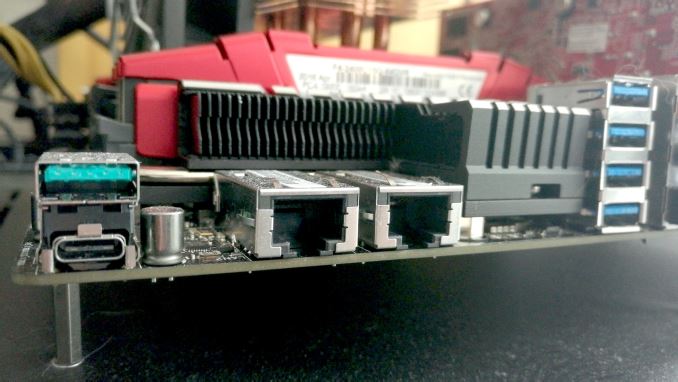

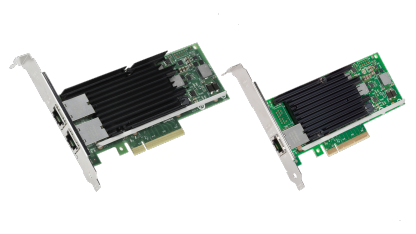
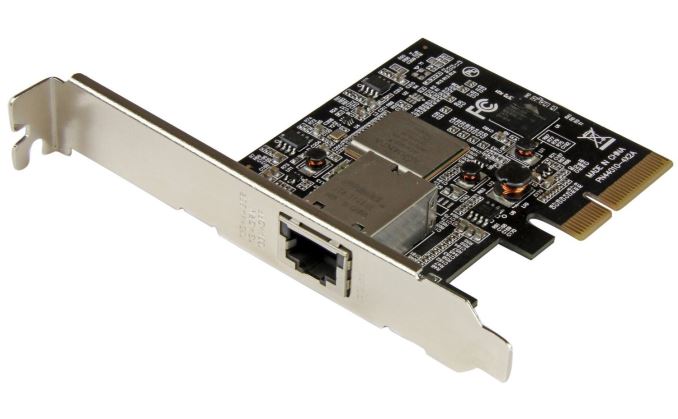
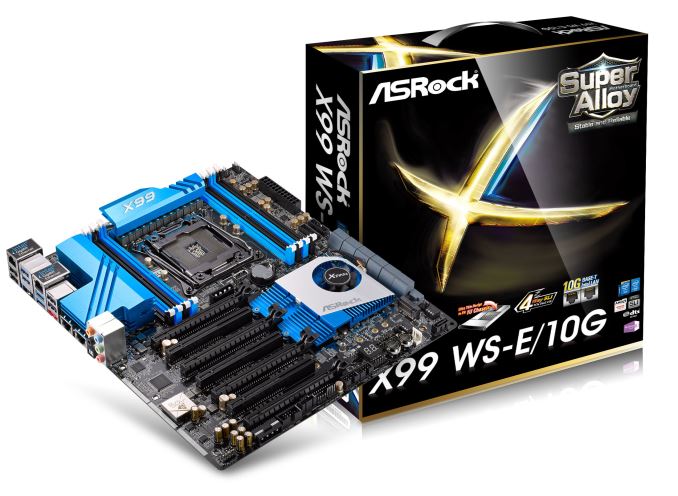
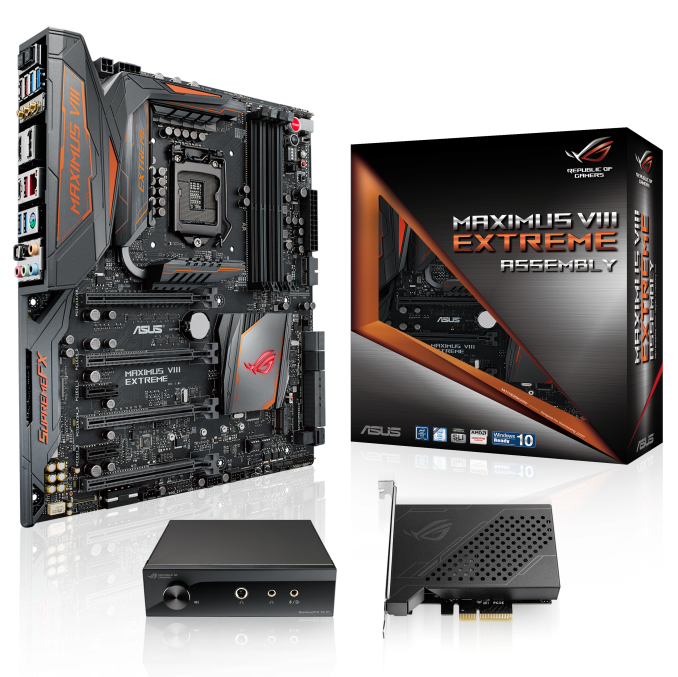
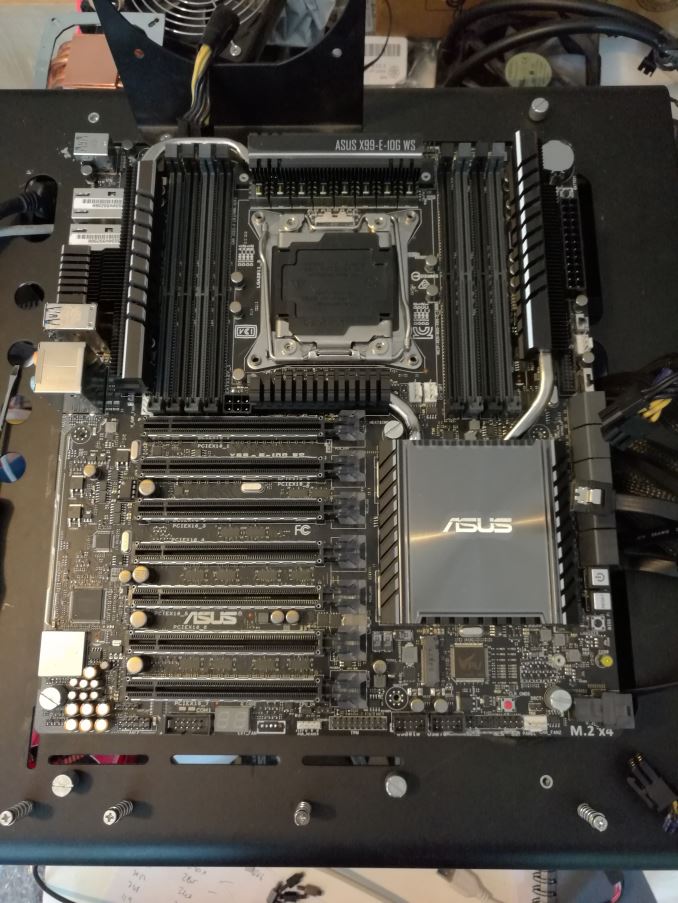


 Quote
Quote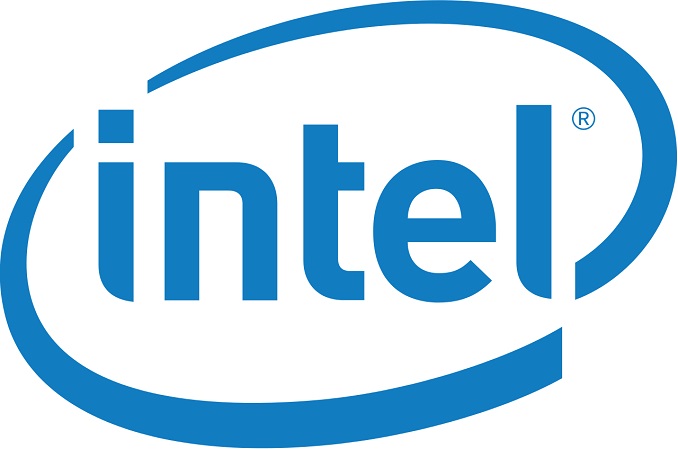


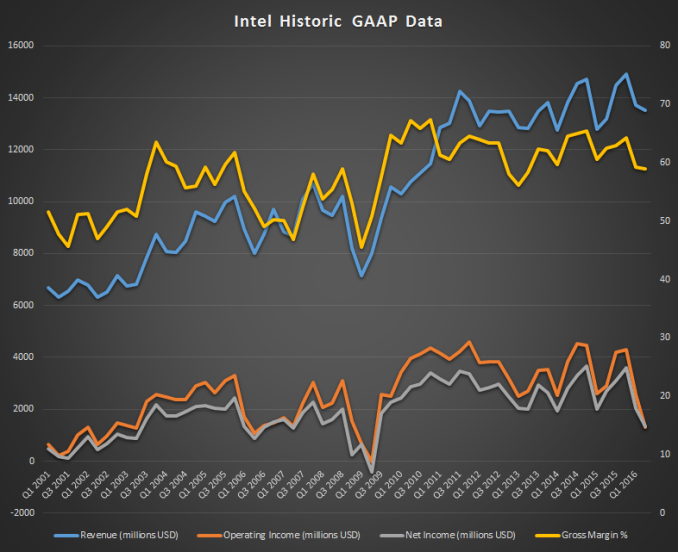
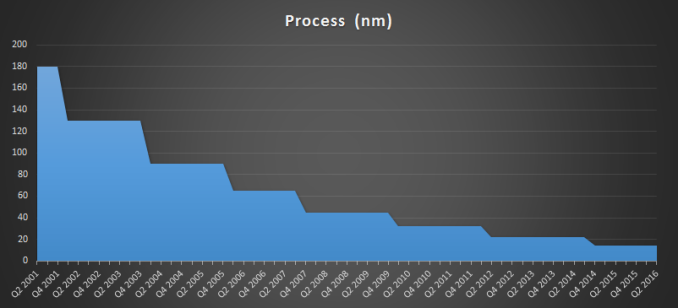
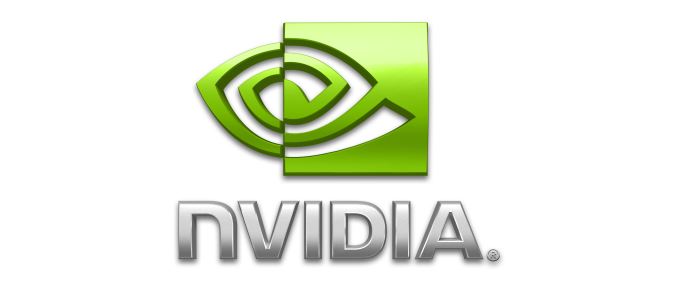
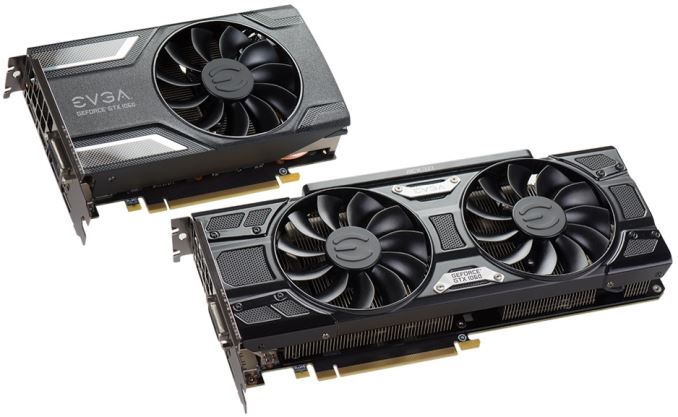
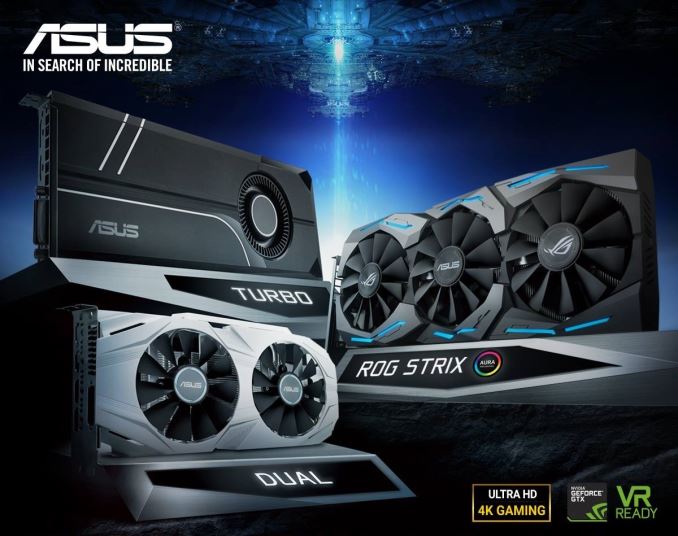
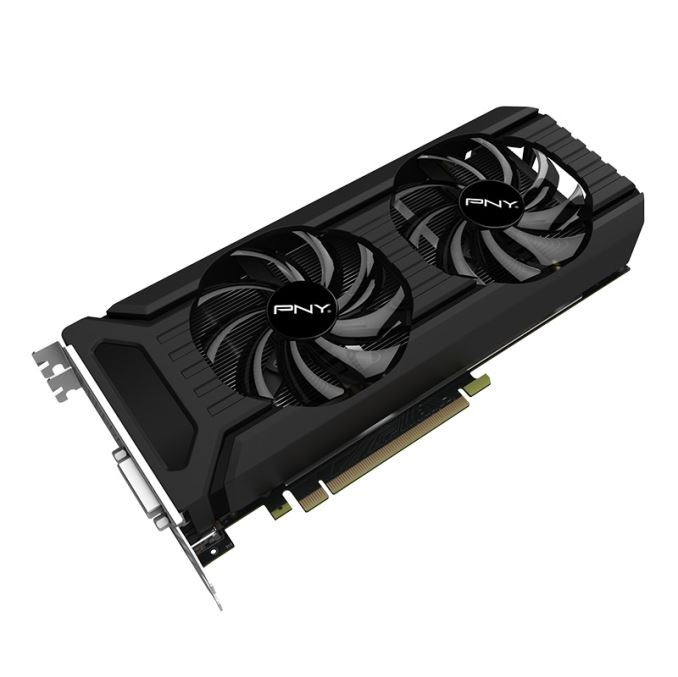
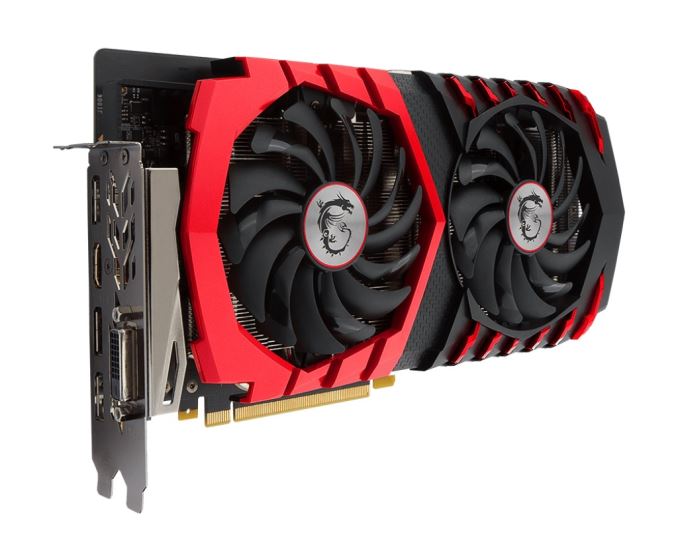
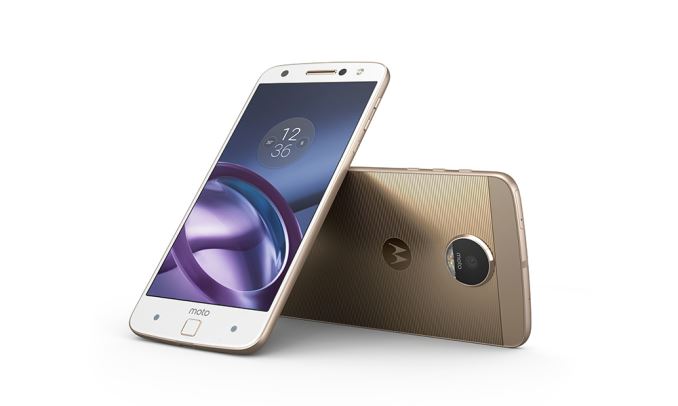



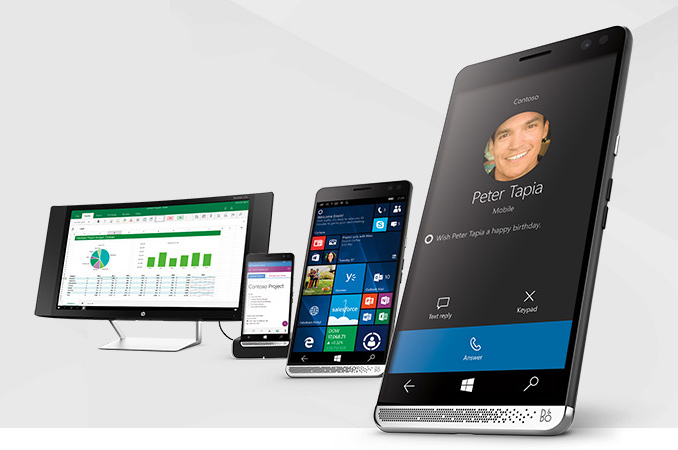
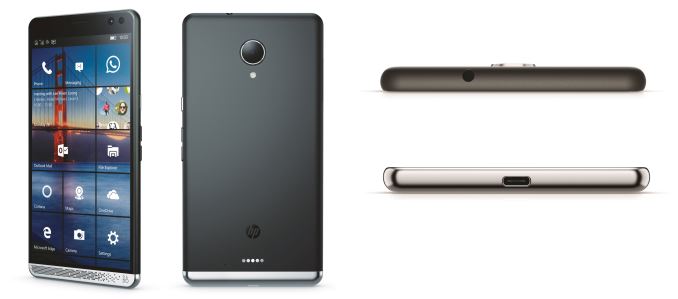


















Bookmarks